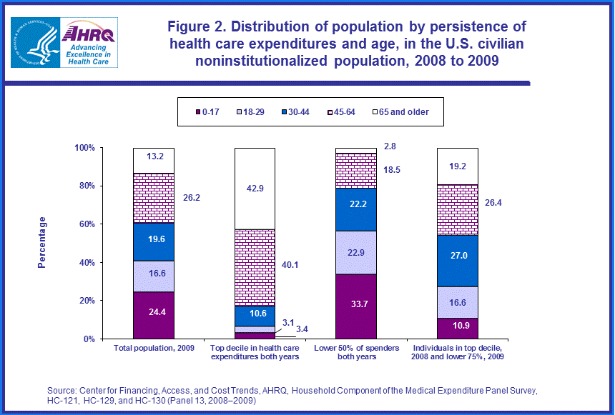5% of Americans Made Up 50% of U.S. Health Care Spending
And the top 1%? They made up one fifth of medical expenditures.

When it comes to America's spiraling health care costs, the country's problems begin with the 5%. In 2008 and 2009, 5% of Americans were responsible for nearly half of the country's medical spending.
Of course, health care has its own 1% crisis. In 2009, the top 1% of patients accounted for 21.8% of expenditures.
The figures are from a new study by the Department of Health and Human Services, which examined how different U.S. demographics contributed to medical costs. It looked at the $1.26 trillion spent by civilian, non-institutionalized Americans each year on health care.
The top 5% of spenders paid an annual average of $35,829 in doctors' bills. By comparison, the bottom half paid an average $232 and made up about 3% of total costs.
Aside from the fact that such a tiny fraction of the country was responsible for so much of our expenses, it also found that high spenders often repeated from year to year. Those chronically ill patients skewed white and old and were twice as likely to be on public health care as the general population.
The graph below looks at how many people remained in each tranche of health care spending in both 2008 and 2009. One fifth of the top 1% of health care spenders in 2008 also were in the top 1% a year later. More than a third of those in the top 5% stayed there both years.

According to this follow-up chart, elderly patients, aged 65 or older, made up 13.2% of the population in 2009. But they were 42.9 of the patients among the top 10% of spenders in both 2008 and 2009. Middle-aged Americans made up another 40.1% of that category.

America's health care spending crisis is a concentrated phenomenon. The challenge isn't just about making everybody's insurance cheaper (although that would be nice). It's about figuring out how to cut costs, wisely and fairly, for the disastrously ill and preventing diseases before they become chronic. This is America's 5% problem.
><